Energy Optimisation Models for Self-Sufficiency of a Typical Turkish Residential Electricity Customer of the Future
Abstract
:1. Introduction
2. State of the Art
2.1. Literature Review on Residential Energy Management Systems
2.2. Progress beyond the State of Art
3. Materials and System Description
3.1. Photovoltaic System
3.2. Battery Storage System
- : Battery capacity of next hour
- : Initial battery capacity
- : Determined minimum battery capacity
- : Determined maximum battery capacity
- : Produced solar energy
- : Total home consumption including appliances, water purifier and EV
- : Imported or exported energy from grid
3.3. Electric Vehicle Charging
3.4. Residential Demand
3.5. Time of Use (ToU) Tariff
4. Hybrid Home Energy Management Algorithm Methodology
- ▪
- Generated energy from PV
- ▪
- Non-shifting loads, or the household appliances
- ▪
- A water purification system that can be operated at any time of the day and thus provides flexibility
- ▪
- An electric vehicle that plugs in at certain times of the day and provides a flexible charging opportunity within a plug-in time interval.
- ▪
- A battery system with a certain energy storage capacity
- ▪
- A Time of Use (ToU) tariff
- : Produced solar energy
- : Total house consumption including appliances, water purifier and electric vehicle
- : Discharged energy from the battery
- : Energy loaded into the battery
- : Imported energy from the grid
- : Exported energy from the grid
| Modes | Equation | Description | Level |
|---|---|---|---|
| Mode 1 | PV feeds House Load | Level 1 | |
| Mode 2 | PV feeds House Load and Battery | Level 1 | |
| Mode 3 | PV feeds House Load, Battery, and Grid | Level 2 | |
| Mode 4 | PV feeds House Load and Grid | Level 1 | |
| Mode 5 | PV and Battery feed House Load | Level 1 | |
| Mode 6 | PV and battery feed House Load and Grid | Level 1 | |
| Mode 7 | PV and Grid feed House Load | Level 1 | |
| Mode 8 | PV and Battery and Grid feed House Load | Level 2 | |
| Mode 9 | PV and grid feed House Load and Battery | Level 1 |
5. Comparison of Methodologies
5.1. Basic Control
5.2. Battery Optimisation without Load Scheduling
5.3. Proposed 2-Stage Hybrid Energy Management Algorithm
6. Impact Analysis
6.1. Annual and Monthly Self-Sufficiency Rate
6.2. Net Saving and Return on Investment
7. Results
7.1. Load Scheduling Operation
7.2. Battery Charge/Discharge Scheduling
7.3. Self-Sufficiency Analysis
- -
- BC 1 Batt: Basic Control Method tested on a 1-battery system
- -
- BC 2 Batt: Basic Control Method tested on a 2-battery system
- -
- BC 3 Batt: Basic Control Method tested on a 3-battery system
- -
- OPT 1 Batt: Battery Optimization Method tested on a 1-battery system
- -
- OPT 2 Batt: Battery Optimization Method tested on a 2-battery system
- -
- OPT 3 Batt: Battery Optimization Method tested on a 3-battery system
- -
- OPT + DR 1 Batt: 2-Stage Optimisation Method tested on a 1-battery system
- -
- OPT + DR 2 Batt: 2-Stage Optimisation Method tested on a 2-battery system
- -
- OPT + DR 3 Batt: 2-Stage Optimisation Method tested on a 3-battery system
7.4. Cost-Benefit Analysis
8. Conclusions
- The number of batteries does not provide any additional savings in the system managed with the Basic Control structure. The net saving, which is 2.357 with a single battery, is 2.362 with two batteries and 2.354 with three batteries. Moreover, the ROI value decreases from 13.9% to 9.8% in a 2-battery system and 7.5% in a 3-battery system. Therefore, optimisation algorithms are needed.
- Even with the optimisation algorithms, it is seen that the increase in the number of batteries is not effective enough. In such a netting model, the increase in the number of batteries reduces the ROI from 15.3% (single-battery scenario) to 8.6% (three-battery scenario).
- Adding load scheduling to the model in a single battery system makes a greater contribution than adding a battery. Despite the additional revenue a second battery brings, the ROI drops from 14.5% to 10.6%. Alternatively, when additional load scheduling is used for a single battery, this value increases to 15.3%. In this respect, it is very cost-effective to provide a smart management system without the additional battery cost.
- When the load scheduling effect is examined in systems with two and three batteries, it is seen that it provides a much lower effect than a system with a single battery. Even in the double and single battery system, 2-stage energy management has provided the same added value. The reason for this is that, with the increase in battery capacity, the electric vehicle can be fed from the energy stored in the battery. In this case, it makes no sense to shift the electric vehicle load.
- Finally, when the ROI values are examined, it is seen that the use of optimisation methodology increases the ROI value, but the ROI decreases with the increase in the number of batteries. For instance, the proposed 2-stage structure single-battery system increases the ROI value from 13.9% to 15.3%, but as the number of batteries increases, the ROI decreases to 10.7% in the dual-battery scenario and 8.6% in the three-battery scenario, respectively. There is a need for new generation smart tariffs that will meet the flexibility needs of network operators, increase the use of renewable energy, and encourage prosumers. Although conventional ToU tariffs are beneficial in reducing peak consumption, they do not provide sufficient incentive for prosumers and cause the system load to be shifted to the night period when there is no solar generation at night.
- The energy optimisation model that is presented in this paper targets only residential usage. However, the model can be improved or implemented into residential communities—districts—to increase and sustain efficiency by controlling more than one residential electricity customer. As this paper shows, optimisation methods are needed to enhance more efficient energy production and consumption. Besides, a machine-learning algorithm should be developed to control and predict momentary and future energy production and consumption, as this paper only focuses on real-time data. Last but not least, residential EV fleet management should be considered and enhanced when residential communities are included in future work.
Author Contributions
Funding
Institutional Review Board Statement
Informed Consent Statement
Data Availability Statement
Conflicts of Interest
Abbreviations
| ICT | Information and Communications Technology |
| ODIH | Open Digital Innovation HUB |
| DSM | Demand Side Management |
| TOU | Time of Use |
| DSO | Distribution System Operators |
| DER | Distributed Energy Sources |
| HEMS | Home Energy Management Systems |
| EV | Electric Vehicles |
| PV | Photovoltaic |
| LSA | Hybrid Lightning Search Algorithm |
| ANN | Artificial Neural Network |
| EMS | Energy Management System |
| GA | Genetic Algorithm |
| BPSO | Binary Particle Swarm Optimization |
| WDO | Wind Driven Optimization |
| BFO | Bacterial Foraging Optimization |
| HGPO | Hybrid Genetic Algorithm and Particle swarm Optimisation |
| DR | Demand Response |
| V2H | Vehicle to Home |
| V2G | Vehicle to Grid |
| ESS | Energy Storage Systems |
| QoE | Quality of Experience |
| SHEMS | Smart Home Energy Management System |
| RES | Renewable Energy Sources |
| SOC | State of Charge |
| ROI | Return on Investment |
References
- Ekkert, M. Global Energy Transformation: A Roadmap to 2050; The International Renewable Energy Agency (IRENA): Abu Dhabi, United Arab Emirates, 2018. [Google Scholar]
- IRENA. Innovation Outlook Mini-Grids; International Renewable Energy Agency: Abu Dhabi, United Arab Emirates, 2016. [Google Scholar]
- Caramizaru, A.; Uihlein, A. Energy Communities: An Overview of Energy and Social Innovation, EUR 30083 EN.; Publications Office of the European Union: Luxembourg, 2020. [Google Scholar]
- Guo, F.; Wen, C.; Song, Y.-D. Distributed Control and Optimisation Technologies in Smart Grid Systems; CRC Press: Boca Raton, FL, USA, 2017. [Google Scholar]
- Cole, W.; Frazier, A.W. Impacts of increasing penetration of renewable energy on the operation of the power sector. Electr. J. 2018, 31, 24–31. [Google Scholar] [CrossRef]
- Palensky, P.; Dietrich, D. Demand Side Management: Demand Response, Intelligent Energy Systems. IEEE Trans. Ind. Inform. 2011, 7, 381–388. [Google Scholar] [CrossRef] [Green Version]
- Shao, S.; Pipattanasomporn, M.; Rahman, S. Demand Response as a Load Shaping Tool in an Intelligent Grid with Electric Vehicles. IEEE Trans. Smart Grid 2011, 2, 624–631. [Google Scholar] [CrossRef]
- Maharjan, I.K. Demand Side Management: Load Management, Load Profiling, Load Shifting, Residential and Industrial Consumer, Energy Audit, Reliability, Urban, Semi-Urban and Rural Setting; LAP Lambert Academic Publishing: Saarbrucken, Germany, 2010. [Google Scholar]
- Christensen, T.H.; Larsen, S.P.A.K.; Knudsen, H.N. How to engage households in energy demand response solutions? In ECEEE 2019 Summer Study Proceedings: Is Efficient Sufficient? European Council for an Energy Efficient Economy: Toulon, France, 2019. [Google Scholar]
- Patel, K.; Khosla, A. Home energy management systems in future smart grid networks: A systematic review. In Proceedings of the 2015 1st International Conference on Next Generation Computing Technologies (NGCT), Dehradun, India, 4–5 September 2015. [Google Scholar]
- Mahapatra, B.; Nayyar, A. Home Energy Management System (HEMS): Concept, Architecture, Infrastructure, Challenges and Energy Management Schemes. Energy Syst. 2019, 1–27. [Google Scholar] [CrossRef]
- Anvari-Moghaddam, A.; Guerrero, J.M.; Vasquez, J.C.; Monsef, H.; Rahimi-Kian, A. Efficient energy management for a grid-tied residential microgrid. IET Gener. Transm. Distrib. 2017, 11, 2752–2761. [Google Scholar] [CrossRef] [Green Version]
- Hussain, H.M.; Javaid, N.; Iqbal, S.; Hasan, Q.U.; Aurangzeb, K.; Alhussein, M. An Efficient Demand Side Management System with a New Optimized Home Energy Management Controller in Smart Grid. Energies 2018, 11, 190. [Google Scholar] [CrossRef] [Green Version]
- Samuel, O.; Javaid, S.; Javaid, N.; Ahmed, S.H.; Afzal, M.K.; Ishmanov, F. An Efficient Power Scheduling in Smart Homes Using Jaya Based Optimisation with Time-of-Use and Critical Peak Pricing Schemes. Energies 2018, 11, 3155. [Google Scholar] [CrossRef] [Green Version]
- Aslam, S.; Iqbal, Z.; Javaid, N.; Khan, Z.A.; Aurangzeb, K.; Haider, S.I. Towards Efficient Energy Management of Smart Buildings Exploiting Heuristic Optimization with Real Time and Critical Peak Pricing Schemes. Energies 2017, 10, 2065. [Google Scholar] [CrossRef] [Green Version]
- Alilou, M.; Tousi, B.; Shayeghi, H. Home energy management in a residential smart micro grid under stochastic penetration of solar panels and electric vehicles. Sol. Energy 2020, 212, 6–18. [Google Scholar] [CrossRef]
- Asadinejad, A.; Tomsovic, K. Optimal use of incentive and price based demand response to reduce costs and price volatility. Electr. Power Syst. Res. 2017, 144, 215–223. [Google Scholar] [CrossRef] [Green Version]
- Lujano-Rojas, J.M.; Monteiro, C.; Dufo-López, R.; Agustín, J.L.B. Optimum residential load management strategy for real time pricing (RTP) demand response programs. Energy Policy 2012, 45, 671–679. [Google Scholar] [CrossRef]
- Rezaee, Y.; Sedaghati, A. Optimal Operation Strategy of Power Systems in the Presence of Smart Grids and Electric Vehicles. Majlesi J. Mechatron. Syst. 2018, 6, 31–40. [Google Scholar]
- Wang, Z.; Yang, R.; Wang, L. Multi-agent control system with intelligent optimization for smart and energy-efficient buildings. In Proceedings of the IECON 2010—36th Annual Conference on IEEE Industrial Electronics Society, Glendale, AZ, USA, 7–10 November 2010; pp. 1144–1149. [Google Scholar] [CrossRef]
- Chekired, F.; Smara, Z.; Mahrane, A.; Chikh, M.; Berkane, S. An Energy Flow Management Algorithm for a Photovoltaic Solar Home. Energy Procedia 2017, 111, 934–943. [Google Scholar] [CrossRef]
- Fachrizal, R.; Munkhammar, J. Improved Photovoltaic Self-Consumption in Residential Buildings with Distributed and Centralized Smart Charging of Electric Vehicles. Energies 2020, 13, 1153. [Google Scholar] [CrossRef] [Green Version]
- Thailand Smart Grid Master Plan 2015–2036; Energy Policy and Planning Office, Ministry of Energy: Bangkok, Thailand, 2015; (Online); Available online: http://www.eppo.go.th/images/Power/pdf/smart_gridplan.pdf (accessed on 25 May 2021).
- Srikranjanapert, M.; Junlakarn, S.; Hoonchareon, N. How an Integration of Home Energy Management and Battery System Affects the Economic Benefits of Residential PV System Owners in Thailand. Sustainability 2021, 13, 2681. [Google Scholar] [CrossRef]
- Dinh, H.T.; Yun, J.; Kim, D.M.; Lee, K.H.; Kim, D. A Home Energy Management System with Renewable Energy and Energy Storage Utilising Main Grid and Electricity Selling. IEEE Access 2020, 8, 49436–49450. [Google Scholar] [CrossRef]
- Ahmed, M.S.; Mohamed, A.; Homod, R.Z.; Shareef, H. Hybrid LSA-ANN Based Home Energy Management Scheduling Controller for Residential Demand Response Strategy. Energies 2016, 9, 716. [Google Scholar] [CrossRef] [Green Version]
- Ahmad, A.; Khan, A.; Javaid, N.; Hussain, H.M.; Abdul, W.; Almogren, A.; Alamri, A.; Niaz, I.A. An Optimised Home Energy Management System with Integrated Renewable Energy and Storage Resources. Energies 2017, 10, 549. [Google Scholar] [CrossRef] [Green Version]
- Li, H.; Zeng, P.; Zang, C.; Yu, H.; Li, S. An Integrative DR Study for Optimal Home Energy Management Based on Approximate Dynamic Programming. Sustainability 2017, 9, 1248. [Google Scholar] [CrossRef] [Green Version]
- Li, M.; Li, G.-Y.; Chen, H.-R.; Jiang, C.-W. QoE-Aware Smart Home Energy Management Considering Renewables and Electric Vehicles. Energies 2018, 11, 2304. [Google Scholar] [CrossRef] [Green Version]
- Abdalla, M.A.A.; Min, W.; Mohammed, O.A.A. Two-Stage Energy Management Strategy of EV and PV Integrated Smart Home to Minimise Electricity Cost and Flatten Power Load Profile. Energies 2020, 13, 6387. [Google Scholar] [CrossRef]
- Küfeoğlu, S. The Home of the Future. In Digitalization and Resource Management; Springer International Publishing: Dordrecht, The Netherlands, 2021. [Google Scholar]
- IBB. IBB Open Data Portal. 2020. (Online). Available online: https://data.ibb.gov.tr/dataset/ikitelli-gunes-enerjisi-santrali-elektrik-uretim-miktarlari (accessed on 20 September 2020).
- Ekrekli, M.Y.E.İ.A.C.A. Energy Production and Storage of a Self-Sustaining Hub. In The Home of the Future: Digitalization and Resource Management; Springer: Dordrecht, The Netherlands, 2021. [Google Scholar]
- Dodson, T. Charger Use Study: UK Power Networks’ Recharge the Future Project; UK Power Networks: London, UK, 2018. [Google Scholar]
- Küfeoğlu, S.; Üçler, Ş. Designing the business model of an energy Datahub. Electr. J. 2021, 34, 106907. [Google Scholar] [CrossRef]
- Epias. Exist Transparency Platform. 2021. (Online). Available online: https://seffaflik.epias.com.tr/transparency/piyasalar/gop/ptf.xhtml (accessed on 24 April 2021).
- Solar Power Blog. How Much Does a 10 kW Solar Power System Cost?—2021 Update. (Online). Available online: https://solarpoweredblog.com/how-much-does-a-10kw-solar-power-system-cost/ (accessed on 5 June 2021).
- Çilli, K. Enerji Portali. (Online). Available online: https://www.enerjiportali.com/is-yerimize-bugun-10-kw-gunes-enerjisi-kursak/ (accessed on 5 June 2021).
- Power Energy. Power Energy. (Online). Available online: https://satis.powerenerji.com/cati-uzeri-10-kw-gunes-enerjisi-elektrik-uretimi-maliyeti (accessed on 5 June 2021).
- Tesla Inc. Tesla Powerwall. (Online). Available online: https://www.tesla.com/en_gb/powerwall/design?redirect=no (accessed on 5 June 2021).
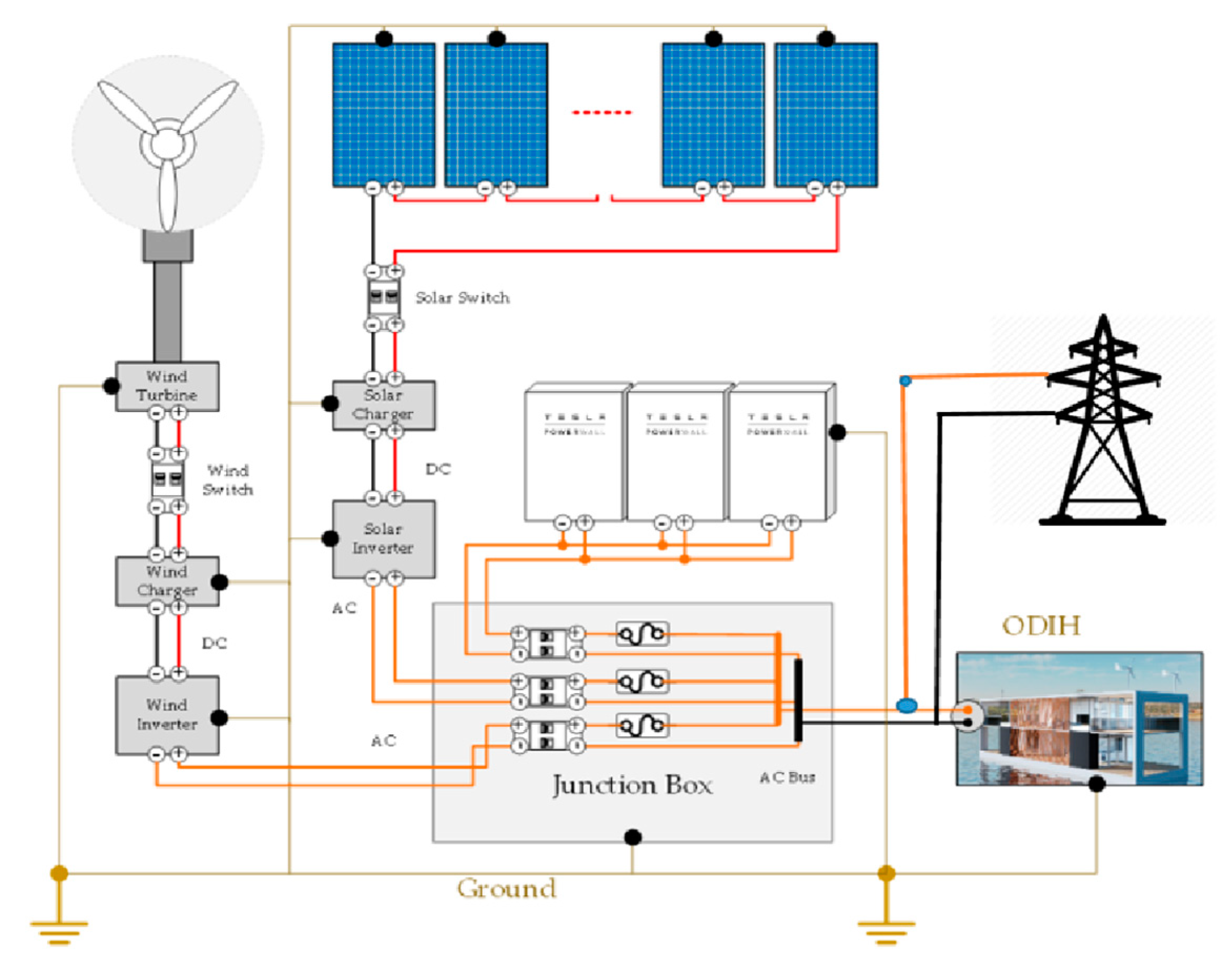

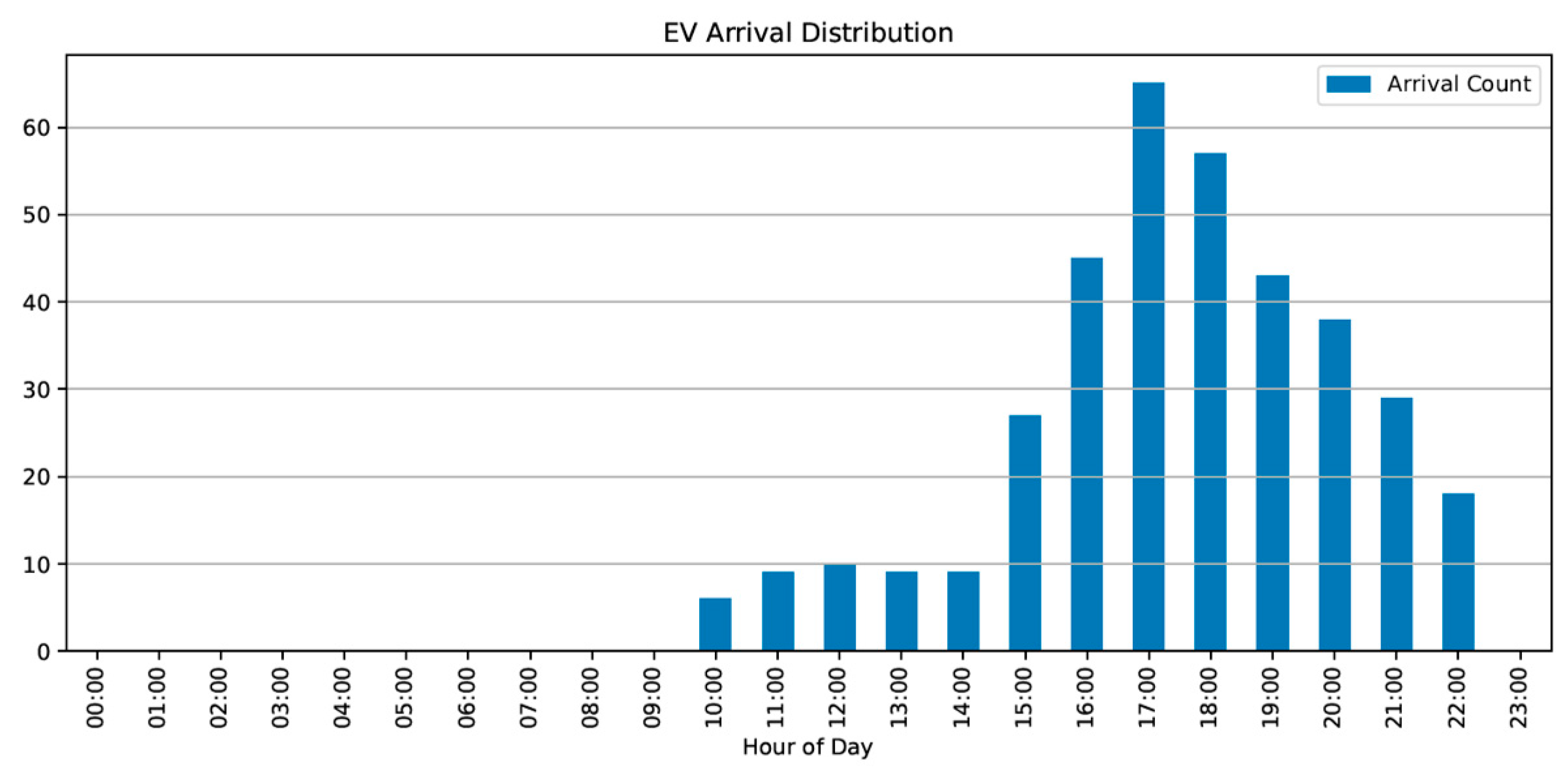



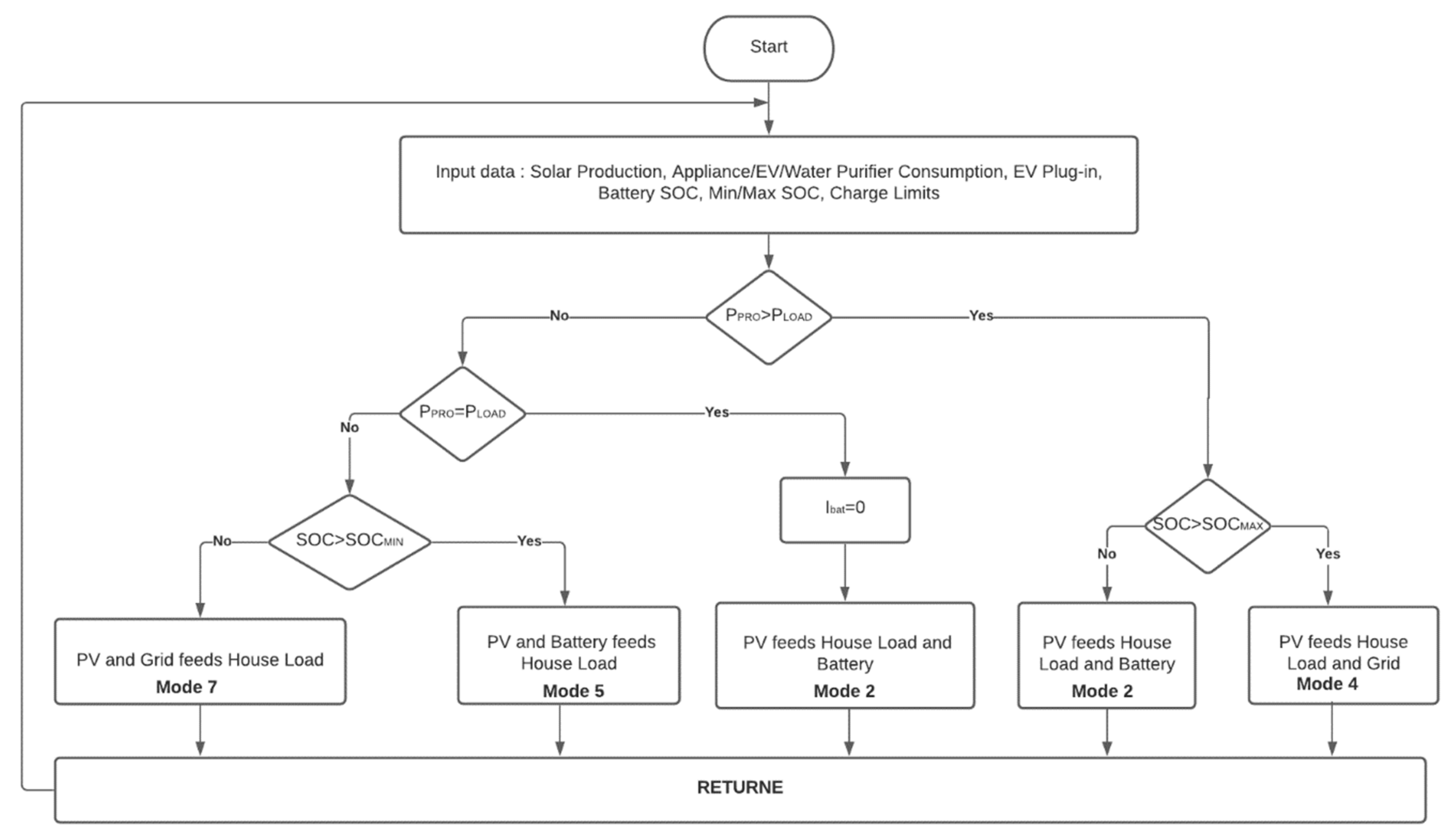
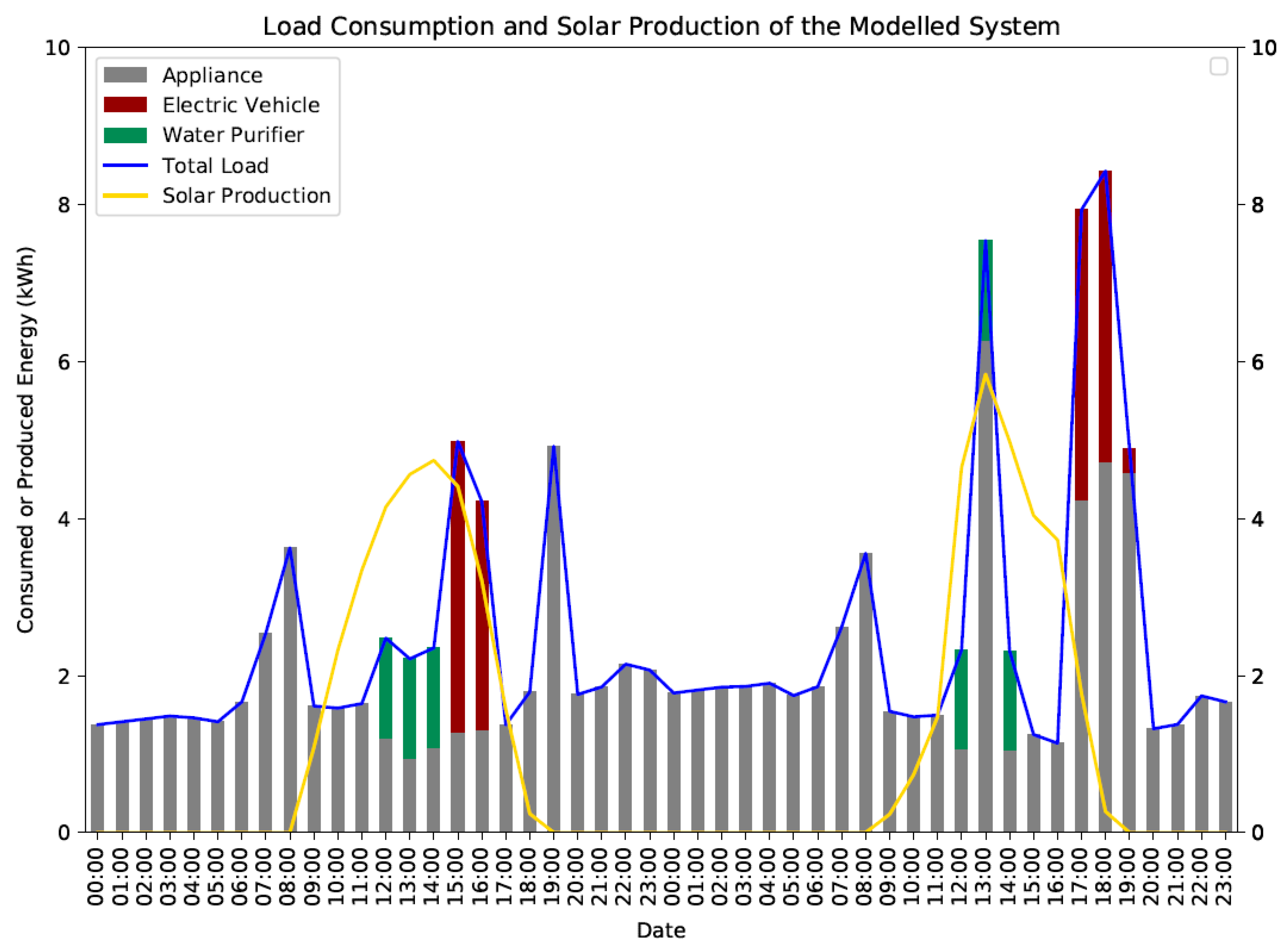




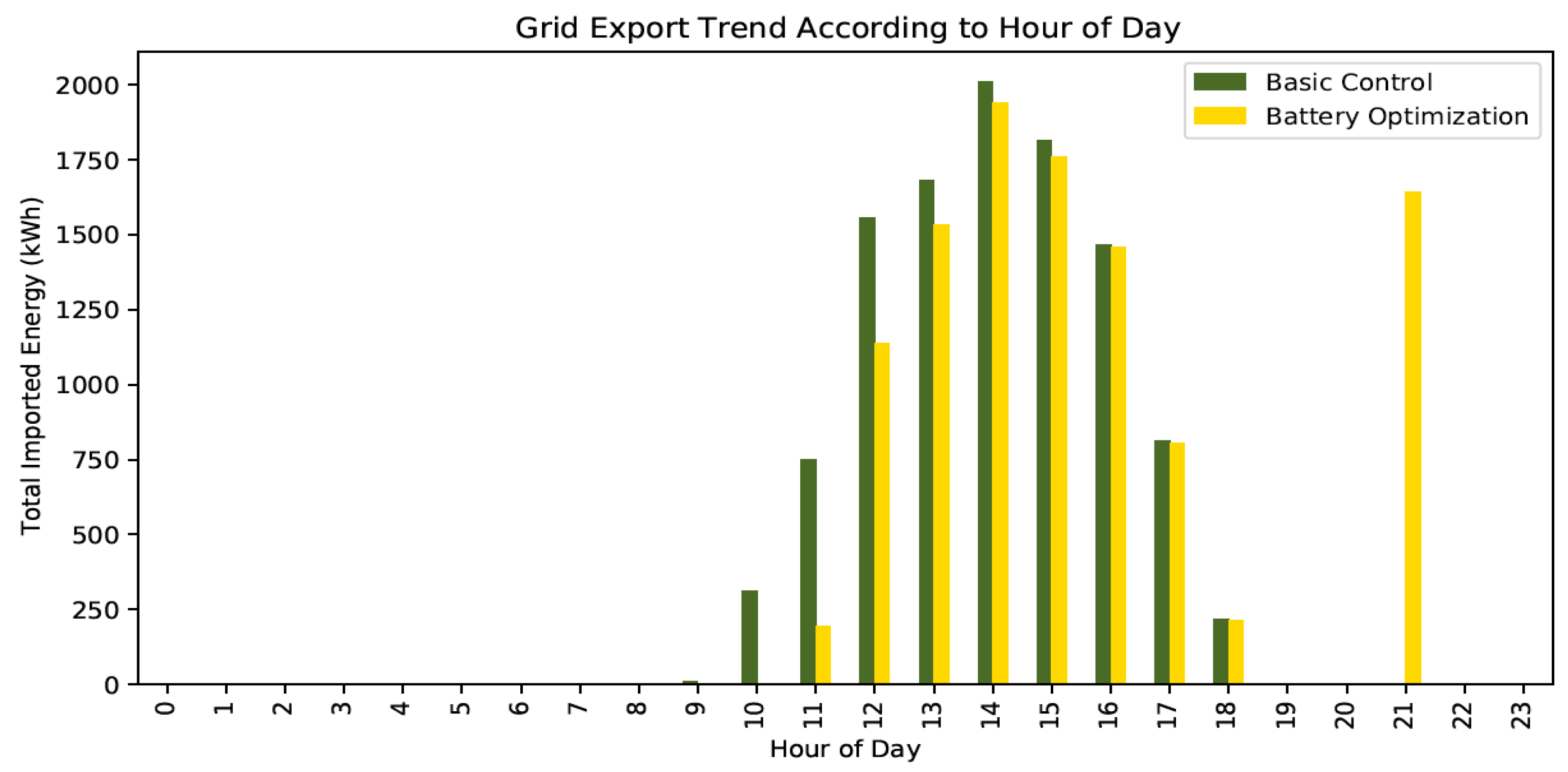
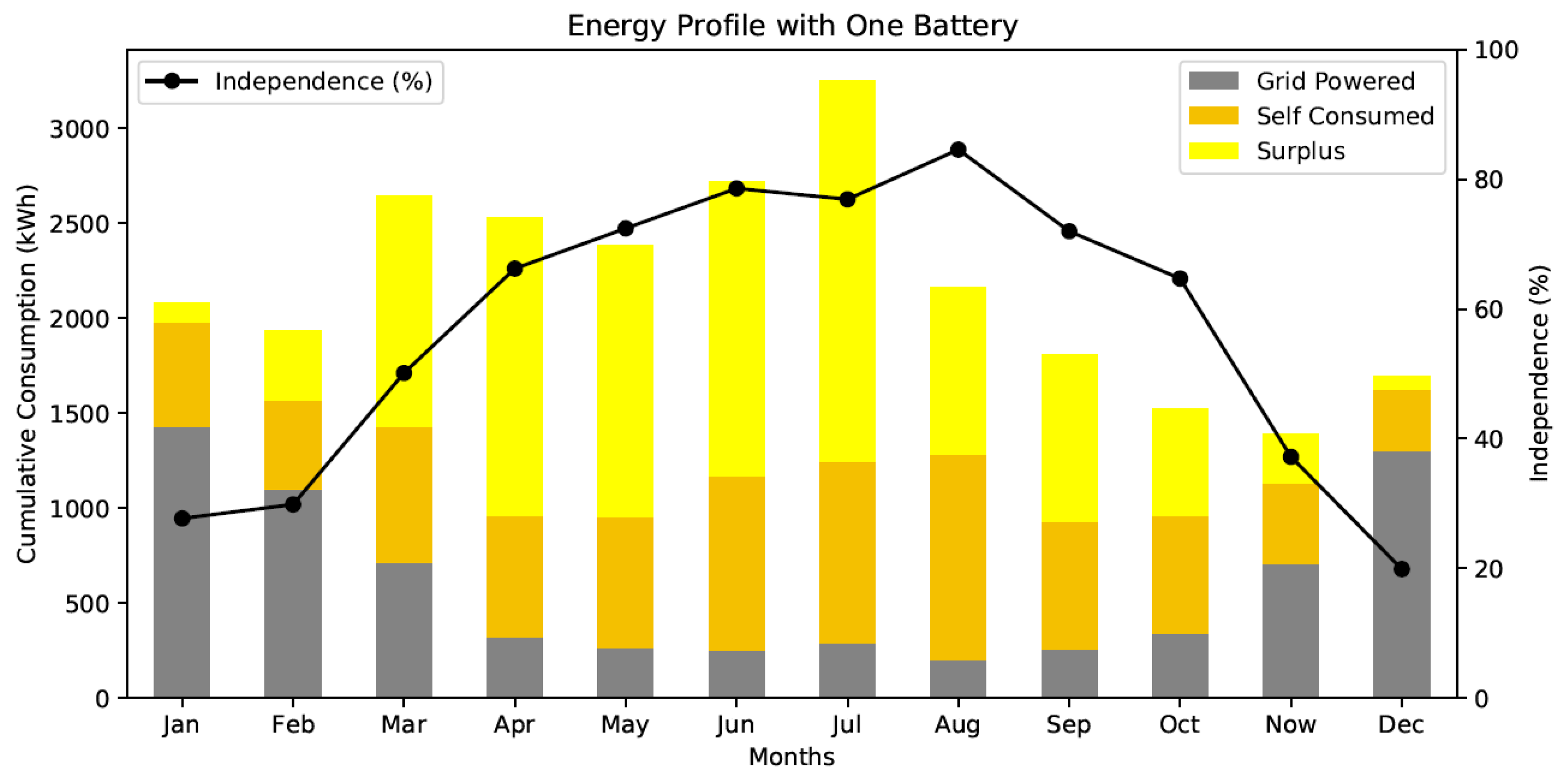
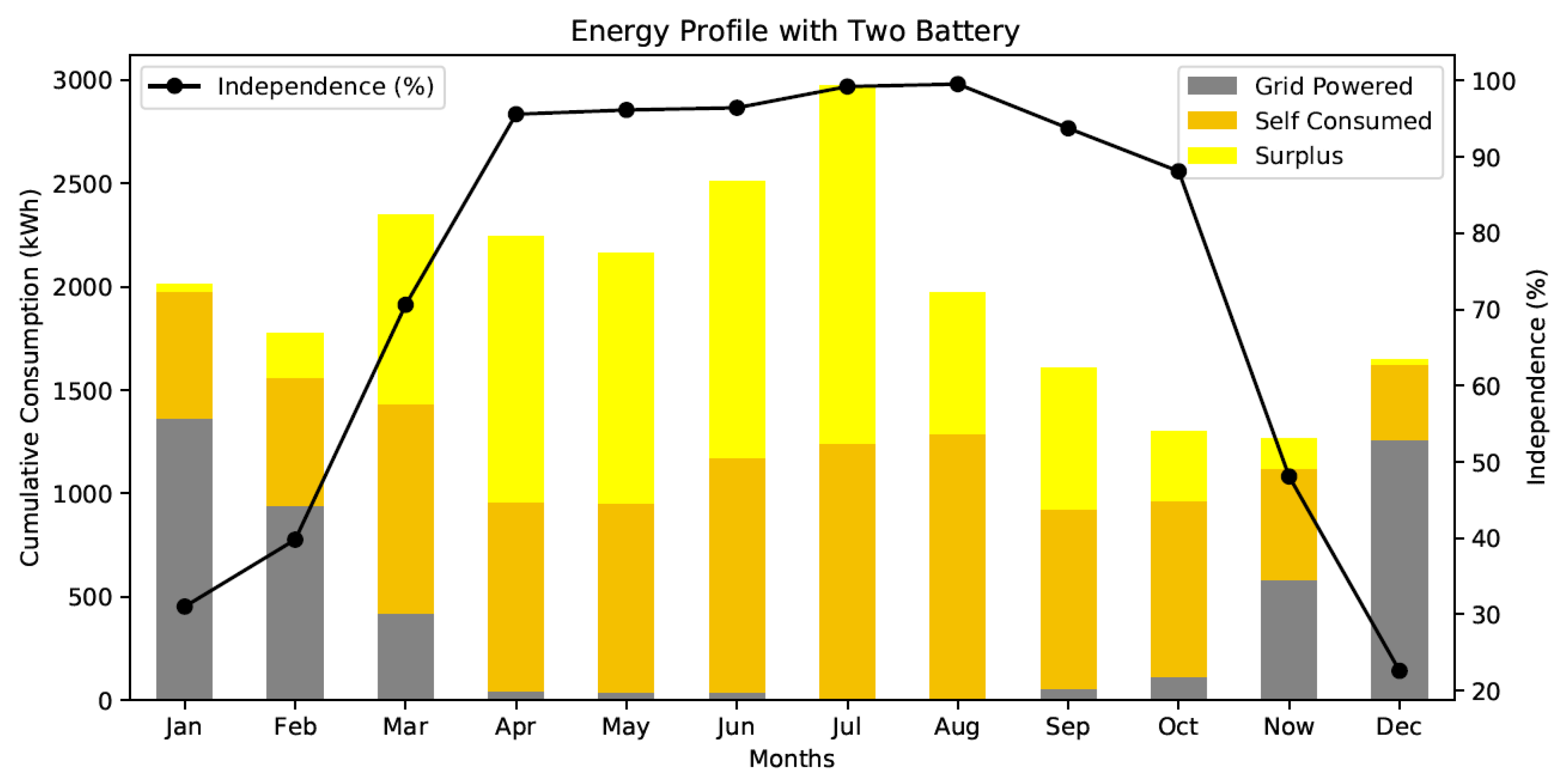


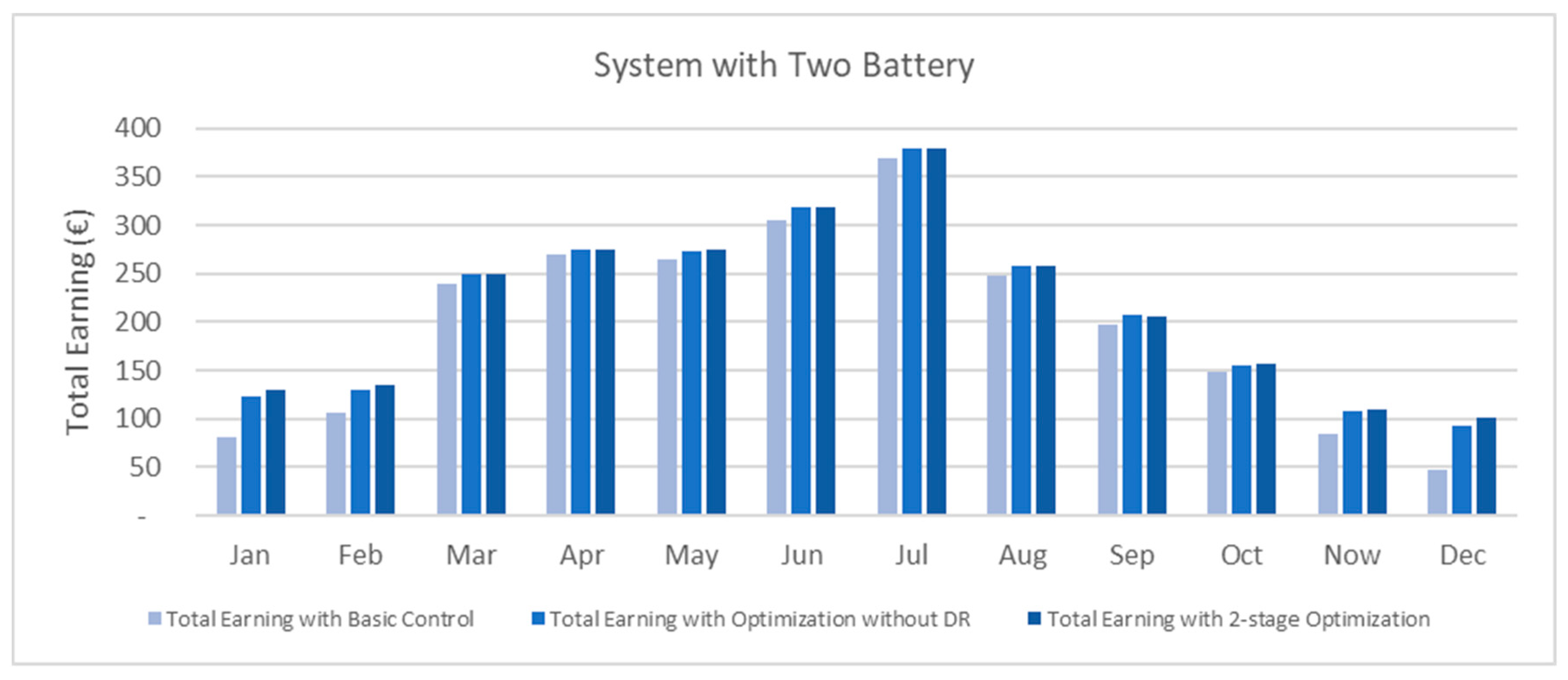



Publisher’s Note: MDPI stays neutral with regard to jurisdictional claims in published maps and institutional affiliations. |
© 2021 by the authors. Licensee MDPI, Basel, Switzerland. This article is an open access article distributed under the terms and conditions of the Creative Commons Attribution (CC BY) license (https://creativecommons.org/licenses/by/4.0/).
Share and Cite
Aycı, D.; Öğüt, F.; Özen, U.; İşgör, B.B.; Küfeoğlu, S. Energy Optimisation Models for Self-Sufficiency of a Typical Turkish Residential Electricity Customer of the Future. Energies 2021, 14, 6163. https://doi.org/10.3390/en14196163
Aycı D, Öğüt F, Özen U, İşgör BB, Küfeoğlu S. Energy Optimisation Models for Self-Sufficiency of a Typical Turkish Residential Electricity Customer of the Future. Energies. 2021; 14(19):6163. https://doi.org/10.3390/en14196163
Chicago/Turabian StyleAycı, Doğukan, Ferhat Öğüt, Ulaş Özen, Bora Batuhan İşgör, and Sinan Küfeoğlu. 2021. "Energy Optimisation Models for Self-Sufficiency of a Typical Turkish Residential Electricity Customer of the Future" Energies 14, no. 19: 6163. https://doi.org/10.3390/en14196163









